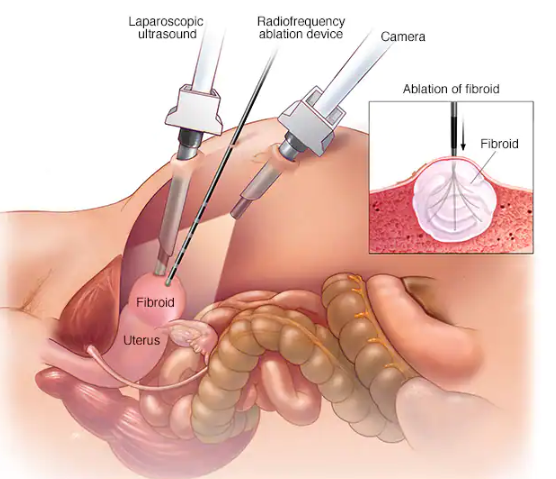Fibroids, noncancerous growths that develop in the uterus, can be a source of discomfort and concern for many women. While they are generally harmless, the symptoms they cause can significantly impact a woman’s quality of life. Fortunately, advancements in medical science have paved the way for personalized strategies in fibroid treatment, offering tailored solutions that address individual needs and preferences.
Understanding Uterine Fibroids
Before we delve into the specifics of individualised management strategies, it’s crucial to understand what uterine fibroids are. They are benign tumours that develop in or around the uterus, often leading to discomfort and health complications such as heavy menstrual bleeding and pelvic pain.
These non-cancerous growths can vary greatly in size, from small, undetectable masses to large tumours that can distort the shape of the uterus. Some women may experience no symptoms at all, while others might endure severe discomfort. The development and growth of fibroids are largely influenced by estrogen and progesterone, the hormones responsible for stimulating the development of the uterine lining during each menstrual cycle.
The Shift towards Personalised Care
Personalized care for uterine fibroids involves understanding the patient’s symptoms, lifestyle, and fertility desires. The treatment plan is then customized accordingly, ensuring the patient’s comfort and satisfaction. This approach marks a significant departure from traditional methods that often fail to consider individual circumstances and preferences.
For instance, if a woman is still planning to have children, surgical removal of the uterus (hysterectomy) wouldn’t be an appropriate option. Instead, other less invasive treatments would be considered to preserve the uterus and fertility. This personalized approach gives patients more control over their treatment, leading to improved outcomes and satisfaction.
Evidence-Based Interventions
An essential aspect of personalized care is the use of evidence-based interventions. These include myomectomy via minimally invasive techniques for fibroid removal and improvement of bulk symptoms. It’s worth noting that these techniques can be adapted based on the patient’s unique needs and situation.
In a myomectomy, the surgeon removes the fibroids while leaving the uterus intact, making it a suitable option for women who wish to become pregnant in the future. Depending on the size, location, and number of fibroids, the surgeon might choose to perform the myomectomy using open surgery, laparoscopy, or hysteroscopy.
Emerging Non-Surgical Therapies
The world of fibroid management is witnessing an exciting trend – the emergence of non-surgical therapies. These innovative treatments are proving to be highly effective for small to medium-sized fibroids. They represent another step towards personalized care, offering patients alternatives to traditional surgical procedures.
One such therapy is Uterine Fibroid Embolization (UFE), a minimally invasive procedure that blocks the blood supply to the fibroids, causing them to shrink over time. Another is MRI-guided focused ultrasound surgery (FUS), where high-energy ultrasound waves are used to target and destroy the fibroids. These options offer shorter recovery times and fewer risks compared to traditional surgeries.
Nurturing Emotional Well-being
Managing uterine fibroids isn’t just about physical health; emotional well-being plays a crucial role too. Recognizing this, healthcare providers offer coping strategies and emotional support tailored to each patient’s needs. This holistic approach ensures that patients are mentally prepared to deal with their health condition.
Living with fibroids can be emotionally taxing due to the discomfort, pain, and impact on fertility. It’s essential to provide patients with the necessary psychological support, whether it be through counselling, support groups, or stress-management techniques. This not only helps improve their mental health but also their overall well-being.
Natural Ways to Manage Symptoms
Lastly, personalized care also extends to managing fibroid symptoms naturally. This involves balancing hormones naturally and adding more organic and detoxifying foods to the diet. These simple yet effective lifestyle changes can significantly alleviate pain and discomfort, enhancing the patient’s quality of life.
Dietary changes can help manage the symptoms of fibroids. Foods rich in beta-carotene, such as carrots and sweet potatoes, can help regulate estrogen levels. Similarly, consuming green, leafy vegetables and whole grains can contribute to maintaining a healthy weight, which is crucial as obesity can increase the risk of fibroids.
In conclusion, the shift towards personalised strategies for fibroid treatment is a welcome change. It puts patients at the centre of care, ensuring they receive interventions best suited to their needs and preferences. As we continue to innovate and research, the future of fibroid management looks promising.





